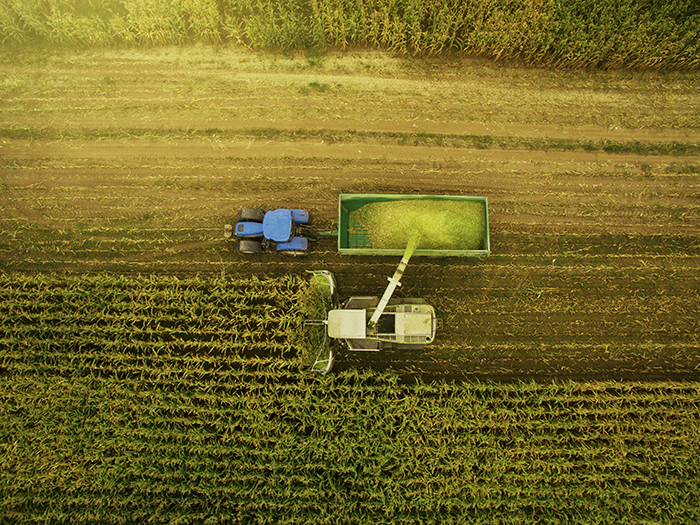Market Update: Farm and Agriculture Risk Management and Insurance

The farm and agriculture insurance market has experienced significant shifts over the past few years, moving from pandemic-era firmness to notable softening in most regions. This transition presents both opportunities and challenges for agricultural businesses seeking appropriate coverage while managing increasingly complex risks.
According to industry observations, major carriers are expanding capacity and easing rate-need in many areas, creating a more favorable environment for buyers. However, this softening market brings its own set of considerations, particularly around proper valuation and emerging exposures that require specialized attention.
“Countrywide, I do feel like the market is softening,” said David Braun, Assistant Vice President of Agribusiness at Philadelphia Insurance Companies (PHLY). “Definitely, in the last twelve months or so, we’ve seen that change.”
The current insurance landscape for agricultural operations shows distinct regional variations. While the overall trend points toward softening, specific areas present unique dynamics that agricultural businesses must understand.
“From my vantage point, the Northwest is probably the softest region in the country for farm and ag business right now,” Braun said. “Depending on account size, it’s not uncommon to see multi-point decreases in renewal rates. ”
This softening extends across most traditional package lines, including commercial property, general liability, and farm liability. However, not all lines of coverage are experiencing the same conditions. Auto insurance still remains fairly firm, and Umbrella capacity and rate-levels have also remained fairly unchanged.
The market dynamics are also influenced by carrier-specific strategies. Major players in convective storm areas such as the Midwest have shifted from a re-underwriting mindset with very little property capacity, to a much softer stance that has brought capacity back to the marketplace.
Regional carriers face their own challenges. Carriers in the Northwest and the Southeast have experienced disruptions from various factors, including natural catastrophes like Hurricane Helene, creating pockets of firmer market conditions within the broader softening trend.
Industry consolidation among agricultural operations adds another layer of complexity. “It is not uncommon at all for us to get submissions on new ventures including joint ventures,” Braun said, indicating that mergers and acquisitions activity continues to reshape the risk landscape.
Technology Adoption Transforms Risk Management
Agricultural operations increasingly leverage technology to mitigate risks and reduce losses, with sensor technology and monitoring systems gaining particular traction. These tools offer both immediate safety benefits and potential long-term insurance advantages.
One significant development involves electrical monitoring systems like Ting, which detect potential fire hazards before they become catastrophic events. “” Braun said.
These systems provide multiple benefits beyond simple monitoring. When electrical hazards are detected, property owners receive not only alerts but also financial assistance for repairs. “We offer Ting totally free to our customers, and if there is an electrical hazard detected, they receive $1,000 in labor repair credit to remedy the issue,” Braun explained.
For commercial agricultural operations, thermal imaging technology plays a crucial role in risk assessment, particularly for large facilities with significant property values. “When we write one of our larger facilities, we typically like to see thermal imaging conducted,” Braun said. These comprehensive inspections examine various areas within facilities, helping identify potential problems before they escalate.
Telematics systems for fleet management have shown measurable results in reducing accidents. “We have legitimate data suggesting a 19% reduction in accidents for vehicles with these devices installed versus those without them. Many of our insureds have already installed telematics in their fleets, but if they haven’t, we strongly encourage them to take advantage of the offering we provide,” Braun noted.
The controlled environment agriculture (CEA) sector presents unique technological considerations. These operations, ranging from large-scale urban greenhouses to smaller container-based growing systems, rely heavily on sophisticated equipment and environmental controls. While they offer benefits like increased yields and protection from outdoor elements, they also concentrate on risk.
“You’ve got a tremendous amount of produce in those facilities, and if there’s a fire, you’re likely going to lose it all. You’ve got significant equipment breakdown exposures as well,” Braun explained, emphasizing the importance of comprehensive risk assessment for these technologically advanced operations.
Best Practices for Coverage and Risk Transfer
Successfully navigating the agricultural insurance market requires understanding the complexities of coverage and the importance of proper valuation. Agricultural businesses should prioritize several key areas when working with brokers and carriers.
Insurance to value (ITV) remains a critical concern, particularly given the unique characteristics of agricultural properties. Standard replacement cost estimators often fail to account for specialized equipment that can exceed their building’s values.
“We have data on a produce packing facility that suggests, if you ran the MSB for a particular structure and it came out to say $10 million, on average, the value of the equipment inside that facility is probably around $12.5 million,” Braun said. This discrepancy can leave operations significantly underinsured without a proper assessment.
Understanding operational nuances helps secure appropriate coverage and pricing. For auto fleets, the distinction between rural and urban routing significantly impacts risk assessment. “If you’ve got semis operating primarily in agricultural areas, that’s one thing,” Braun explained. “If that fleet is being operated in or near larger population centers, however, that’s a totally different fleet exposure.”
Working with carriers who specialize in agricultural risks provides distinct advantages. These specialists understand industry-specific challenges, from varying revenue calculation methods for the same operations to seasonal equipment usage patterns.
When evaluating coverage adequacy, agricultural businesses should regularly reassess their property limits. “If you have a total fire loss or a direct hit from a tornado, how confident are you that you’re going to be wholly restored after that?” Braun advised.
Philadelphia Insurance Companies has specialized expertise in agricultural risks, covering commercial agriculture operations and farm owners across the country. The company’s approach includes leveraging technology partnerships for risk mitigation while maintaining focus on proper valuation and coverage structure.
Looking ahead, the agricultural insurance market will likely continue evolving as new risks emerge and technology advances. Per- and Polyfluoroalkyl Substances, commonly known as PFAS contamination, represents one area of uncertainty, with long-term implications still unclear. Meanwhile, the growth of controlled environment agriculture and continued industry consolidation will require ongoing adaptation from both insurers and agricultural businesses.
For agricultural operations navigating these changes, the key lies in partnering with knowledgeable advisors who understand traditional farming risks and emerging exposures. Regular coverage reviews and proper valuation assessments can help ensure adequate protection in a changing marketplace.
“We’ve just seen at claims time there can be an unexpected realization that 100% insurance-to-value was not in place, and the ramifications of that can be significant,” Braun cautioned. &











